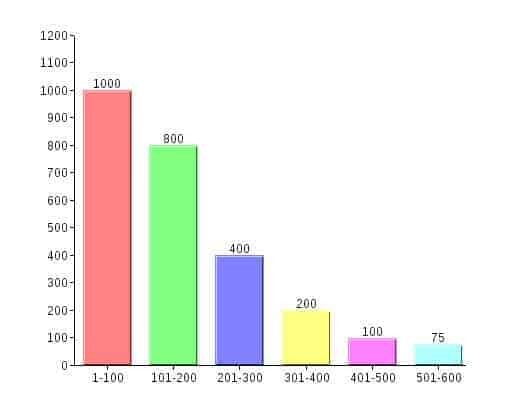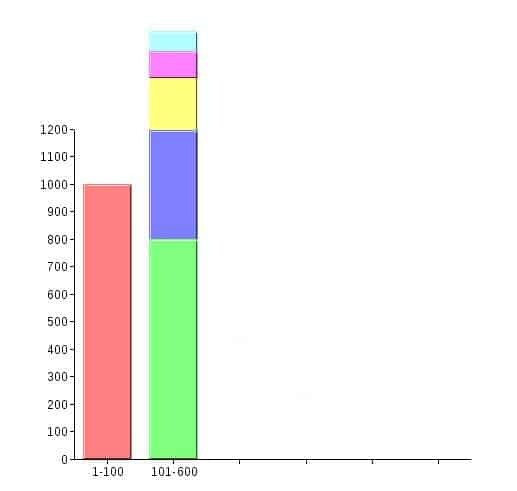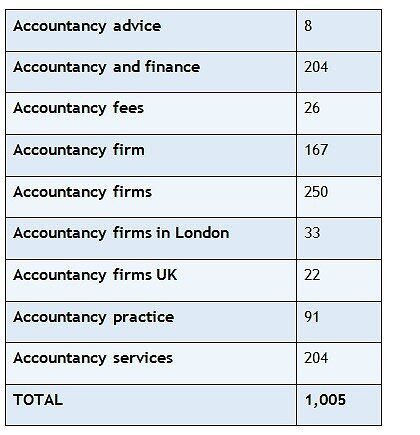The Long Tail is an idea popularised by author Chris Anderson in his book, The Long Tail. The central theme of the idea is that the vast majority of sales frequently comes in the small numbers of individual items which are sold by a business, rather than in their most popular lines. For instance, a company may have 100 product lines and knows that most sales come from the top 10 items. The number one most requested item is clearly much more popular than the 100th. Many companies know that 80% of their sales come from 20% of their products – this is the “80:20 rule” or the Pareto Principle.
In contrast The Long Tail suggests things may not be quite as they seem. Indeed, some people believe it tells us the reverse of what the 80:20 rule suggests. When you look at raw numbers, popular items do stand out as sales leaders. So, naturally enough, companies concentrate on them. Why focus your energies on items which sell once in a while when you can concentrate on things which sell every day?
But when you look at TOTAL sales, the figures tell another story. When a company looks at total sales, they tend to find that the vast majority of sales come from their least popular items.
Look at the typical sales graphs below. The first one shows the sales of audio CDs. Clearly the Top 100 sells more than those which are ranked 101-200 and so on. But the second graph shows what happens when we total up the sales. The BOTTOM 500 sell more than the Top 100 by a long way.


What this shows us is the fact that there could well be more money in the WORST SELLING items than in the top sellers. The problem in traditional retail is a logistics one. For example, in the world of CDs there are several million available. The Top 100 are bought everywhere, but that 4 millionth seller that only sells a couple of copies a year? Which store in the world do you put them? And besides there simply is not enough shelf space for what could be sold. There are over 4 million books in print at the moment and Europe’s biggest bookshop, Waterstone’s in London’s Piccadilly can only stock 100, 000 of them. They are the most popular sellers BUT the real money is in the 3.9m they cannot sell because of logistical issues.
Online, of course, there is no such issue. You can have one warehouse which stocks everything and no matter where the order is placed you can deliver anywhere in the world.
However, it is not just product sales where the Long Tail effect can be seen. It also occurs in keywords used to promote websites on search engines. People often like to be ranked highly for the most popular keyword. That makes sense after all because it is the most popular…! So if you are ranked highly for it, then loads of people will see your link and may well visit your site as a result. But the Long Tail effect shows us that this is the wrong strategy.
As an example, take an accountancy practice. They want to be found for the word “accountancy” – obviously! Each day in the UK there are over 5,000 searches for that word. But there are over 38m results on Google. Being found would be a needle in a haystack job. But using a keyword tool you can discover that there are hundreds of “long tail” keywords for accountancy.
The table below shows some long tail results.

Even with these keywords you stand a better chance of gaining traffic because the competition is much lower and if you have enough of them you can gain much more search visitors than by targeting “accountancy” on its own. With just these nine keywords you can get one fifth of the searches for the single main keyword. Yet keyword research reveals there are hundreds more. For instance, the phrase “accountancy firms in Derby” only has a handful of people looking for it each month, but Google only has 53 results for that phrase. By targeting the long tail keywords not only do you get many more searchers than you would by trying to be found for the main word, but you also get a greater chance of being found because fewer websites target those long tail keywords. The result is that you get many more visitors if you focus on the few rather than going for the many. And you can find the evidence for that by using SEO Profiler.
For anyone selling online there is a double benefit in focusing on the long tail keywords. Not only are you going to be found more easily online, but your products are then precisely what people are looking for, making your chances of a sale greater.
If you are not using the Long Tail concept within your business, you are missing out.
